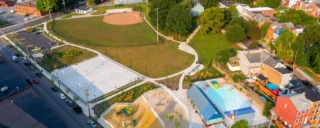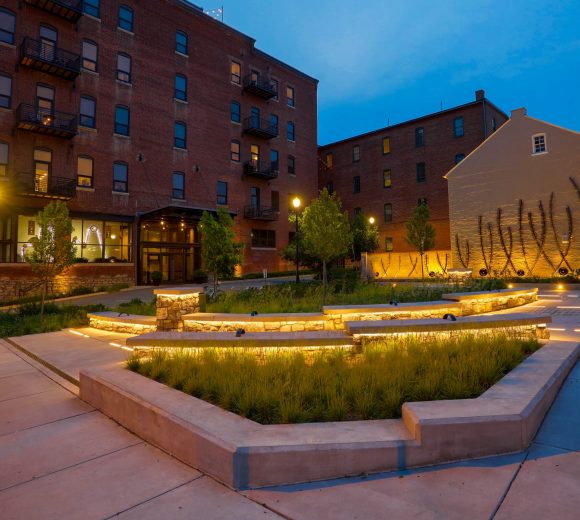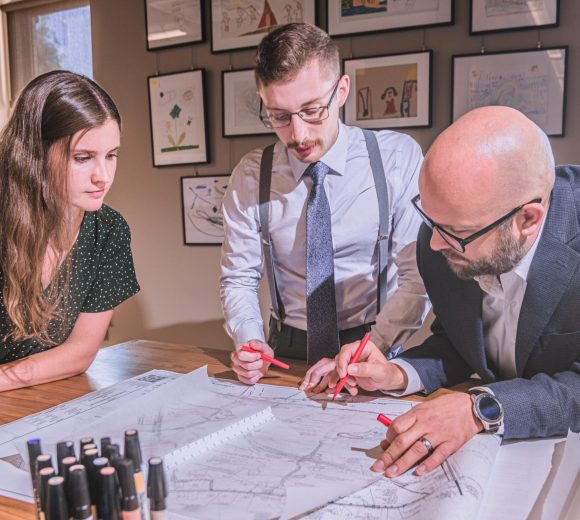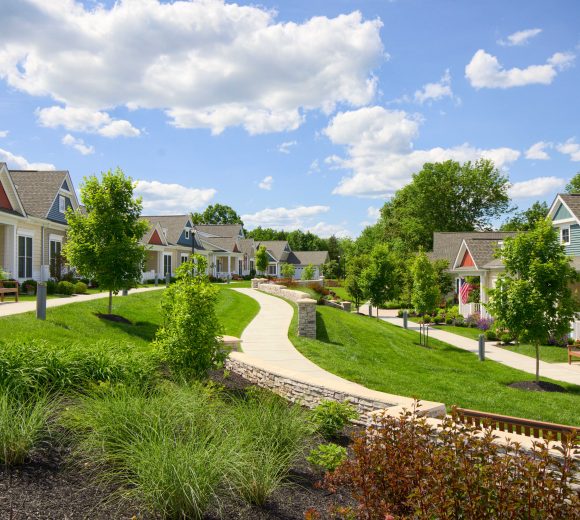Designing Outdoor Living Spaces that Bring Communities Together
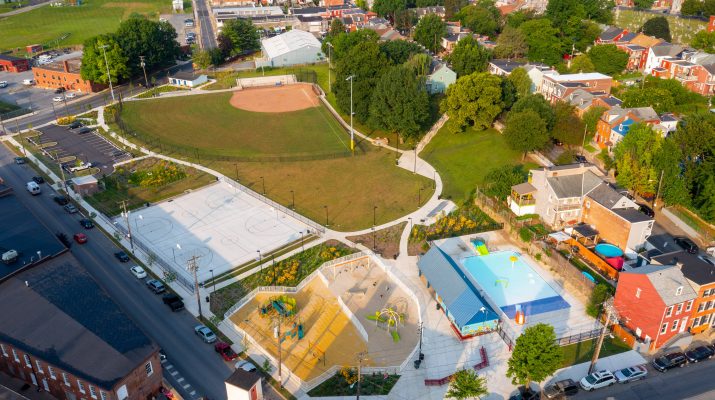
September brings cooler evenings, busier campuses, and a reminder of how important outdoor spaces are to community life.
From college quads to outdoor living and residential courtyards, these places give people room to gather, recharge, and enjoy time together.
At RGS, creating these environments has always been central to our work, whether the setting is a senior living campus, a bustling shopping center, or a healthcare facility.
Why Outdoor Spaces Matter
Shared outdoor environments (sometimes called “third spaces”) play a unique role in our communities. They aren’t private backyards or purely transactional spaces, but common areas designed to encourage interaction and comfort. When done well, they reimagine how people experience a place.
For residents, outdoor spaces provide a comfortable setting to unwind. For students, they become gathering spots for collaboration and friendship. For patients and families, they offer moments of respite in the midst of stress. And for communities at large, they act as unifying spaces that encourage recreation, culture, and connection.
Our team of landscape architects, land planners, and civil engineers view these spaces as opportunities to bring design and purpose together by creating places that are functional, resilient, and meaningful.
Residential & Senior Living Communities

Outdoor living areas are especially vital in residential and senior living settings, because they contribute to both physical wellness and quality of life.
 At Ellis Preserve, RGS designed inviting outdoor courtyards, walking trails, and gathering areas that extend living spaces far beyond the walls of apartments and townhomes. These elements not only enhance daily life for residents but also increase the overall value and desirability of the community.
At Ellis Preserve, RGS designed inviting outdoor courtyards, walking trails, and gathering areas that extend living spaces far beyond the walls of apartments and townhomes. These elements not only enhance daily life for residents but also increase the overall value and desirability of the community.
The same approach has guided our decades-long partnership with Messiah Lifeways, a nonprofit senior living community in Mechanicsburg, PA.
Over the last 20 years, RGS has helped Messiah create campus environments that maximize outdoor experiences. From repositioning the original campus with new courtyards and dining plazas to planning a new 85-acre satellite campus along the Yellow Breeches Creek, every effort emphasizes walkability, natural beauty, and community connection.
In residential settings, well-planned and well-executed outdoor design becomes part of the daily rhythm of life, encouraging everything from casual walks to meaningful social connections.
Educational & Healthcare Settings
For colleges and healthcare systems, outdoor spaces may serve as visually appealing amenities, but they are also part of an essential infrastructure that supports learning, healing, and emotional well-being.

Take Main Line Health’s Lankenau Medical Center, where RGS helped design therapeutic landscapes that ease the stress of patients and their families. Healing gardens, rain gardens, and outdoor gathering areas provide natural relief, while carefully integrated plantings create a calming aesthetic. By designing with both functionality and emotion in mind, RGS created an environment where health care feels more human.
The same principles apply in academic settings. At Bryn Mawr College and other campus environments, outdoor plazas and landscaped corridors serve as central hubs for student interaction. These attractive spaces are also practical extensions of classrooms, libraries, and residence halls, providing opportunities for collaboration, study, and recreation.

Outdoor design in educational and healthcare environments is ultimately about balance: creating places that serve functional needs while also enriching daily human experiences.
Community-Oriented Public Spaces
Public spaces are where RGS’s work touches the widest audience. Here, design decisions affect thousands of people, shaping the way entire communities interact with their environment.

At the Shoppes at Belmont in Lancaster, for example, RGS and Waters Retail Group transformed a challenging site into a destination that blends dining, retail, history, and community life. Beyond the national retailers, Belmont incorporates trails, preserved lime kilns, a quarry-turned-stormwater feature, and a central plaza capable of hosting concerts and neighborhood events. As a retail hub, park, trail system, and gathering place all rolled into one, the Shoppes at Belmont serve as proof that commercial development can also provide community enrichment.
 Similarly, the Culliton Park Improvement Project in the City of Lancaster demonstrates how thoughtful green infrastructure can meet environmental needs while enhancing public amenities. Working with city residents, RGS addressed stormwater challenges by integrating bioretention areas, pollinator-friendly plantings, and improved recreational features. The result was a park renovation that became a vibrant community asset, with one resident describing it as “a gift to the neighborhood.”
Similarly, the Culliton Park Improvement Project in the City of Lancaster demonstrates how thoughtful green infrastructure can meet environmental needs while enhancing public amenities. Working with city residents, RGS addressed stormwater challenges by integrating bioretention areas, pollinator-friendly plantings, and improved recreational features. The result was a park renovation that became a vibrant community asset, with one resident describing it as “a gift to the neighborhood.”
Whether it’s a neighborhood park or a mixed-use development, well-designed outdoor spaces in public settings can honor history, address infrastructure needs, and create places where communities thrive.
The RGS Approach
 What sets RGS apart is the integrated approach we bring to land planning, landscape architecture, and civil engineering. This allows us to design outdoor spaces that are not only attractive, but also functional, sustainable, and resilient.
What sets RGS apart is the integrated approach we bring to land planning, landscape architecture, and civil engineering. This allows us to design outdoor spaces that are not only attractive, but also functional, sustainable, and resilient.
For instance, planting design is a key consideration in every project. We carefully select species that will thrive over time, ensuring landscapes mature gracefully and maintain their character decades into the future. Whether it’s designing a shaded courtyard for a senior community or planning tree-lined pedestrian corridors for a campus setting, our overarching goal is to create spaces that evolve with the communities they serve.
Equally important is our focus on green infrastructure. From permeable pavements and rain gardens to restored streams and natural stormwater systems, we use ecological strategies to solve engineering challenges while paying close attention to the aesthetics of placemaking. These solutions meet the basic regulatory requirements but also enhance biodiversity, improve resiliency, and create beautiful natural features that people enjoy every day.
Looking Ahead: Designing for Connection
As the seasons change, so do the ways people interact with outdoor environments. Yet the need for connection, whether in a quiet courtyard, a college quad, or a bustling community plaza, remains constant.
At RGS, we believe every community deserves outdoor spaces that enrich daily life and stand the test of time. By weaving together form, function, and foresight, we focus on the purposeful design of landscapes that shape experiences and strengthen communities for generations to come.

